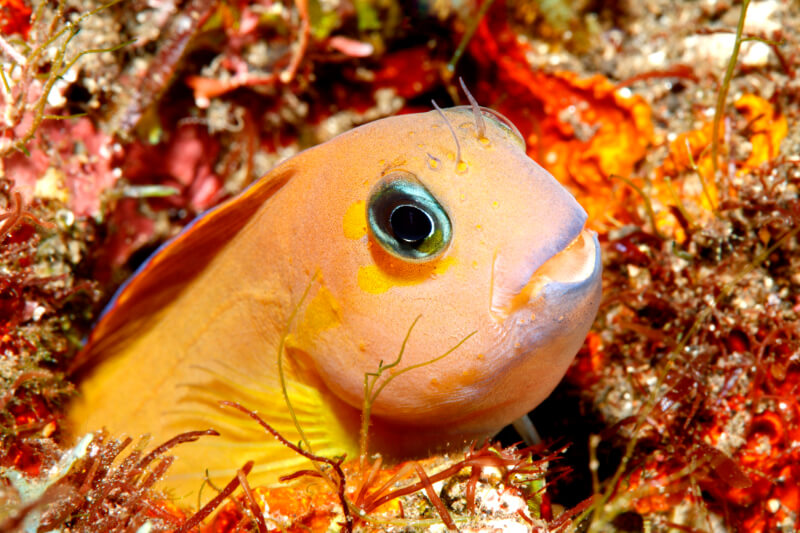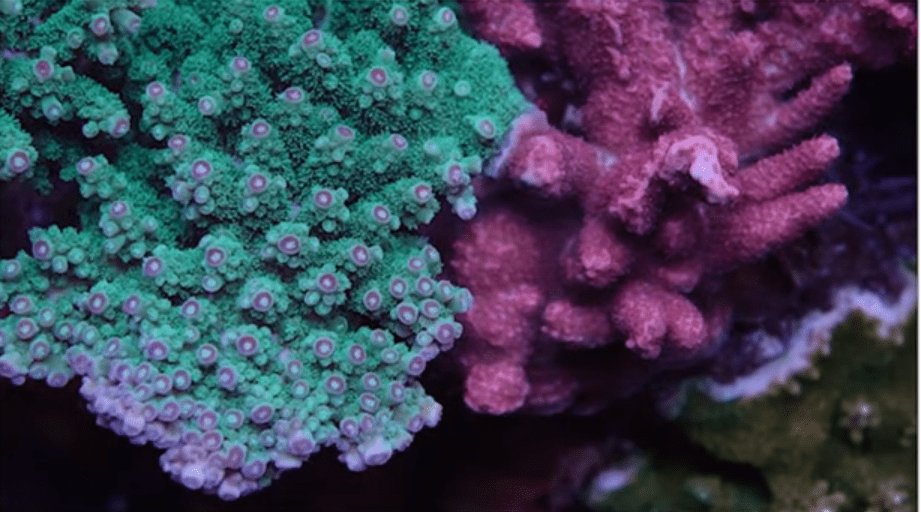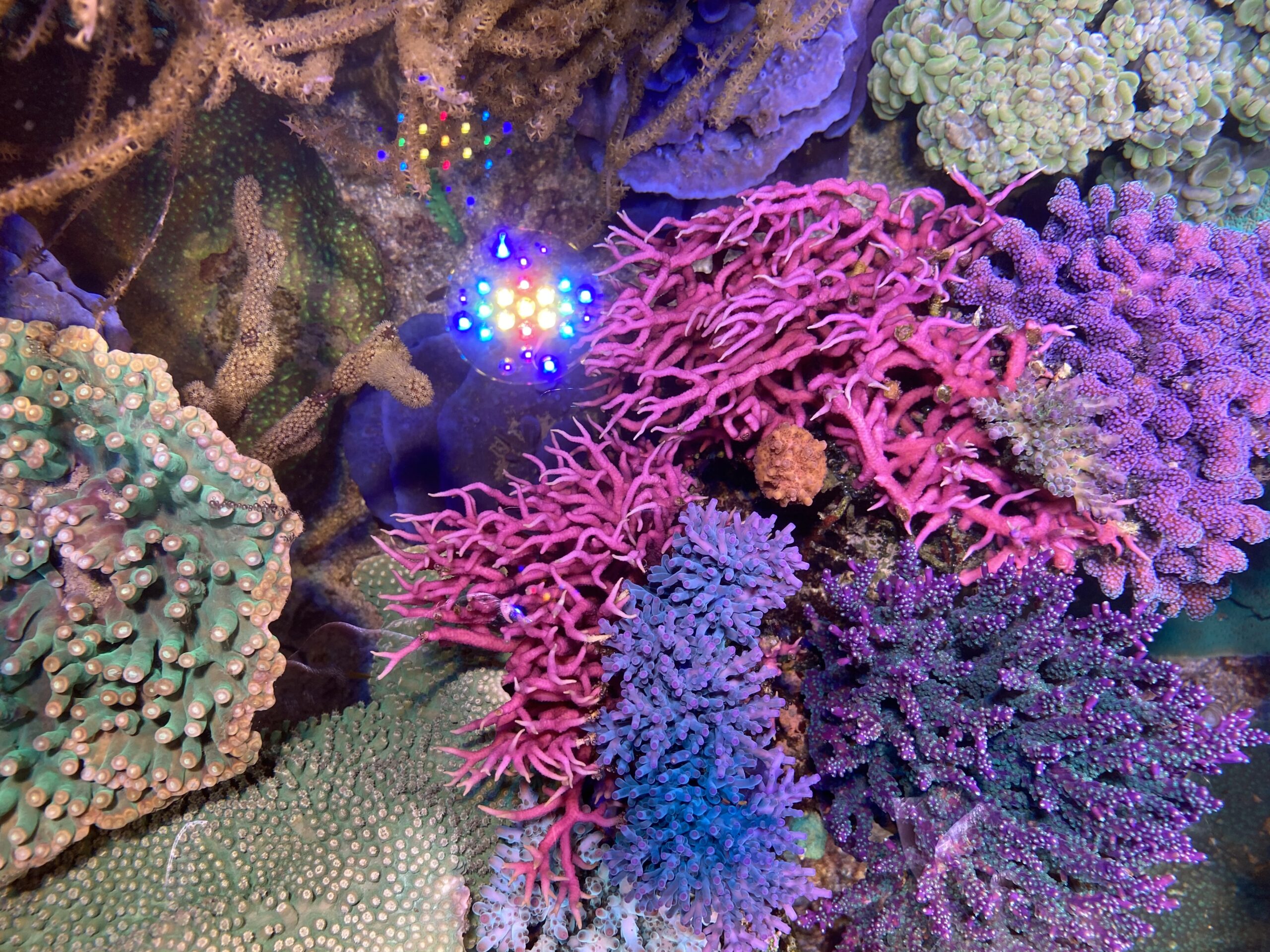Hey there, welcome to the exciting world of the Midas Blenny! If you are a fan of blennies you might like this one but be careful, the Midas likes to be different and you’ll find more on this in the breeding section.
In this guide we cover different topics from the common diet, tank mates and breeding, to interesting not-so-common facts like the “Cirri” explained at the end. Enjoy!
Species Summary
The Midas Blenny is a colorful and charming saltwater fish that’s great for beginner aquarists. Sometimes called by its scientific name Ecsenius Midas, it is also known as the Golden Blenny or Lyretail Blenny, these peaceful creatures are found in the Indo-Pacific region. They’re commonly spotted around southeastern Africa, the Maldives and the Gulf of Aqaba.
In the wild, they’ll often hang out around other schools of fish to hide and take advantage of their natural buoyancy. Midas Blennies don’t have swim bladders and can’t stay inside the water column for long periods by themselves. They tend to “climb” and flit around rocky outcroppings and caves as they search for food. Their hard-working fins give them just enough of a boost to reach the plankton and meaty bits floating by.
Author Note: The Midas Blenny easily adapts to a variety of tank foods and is easy for beginners to manage. If you’re new to caring for an aquarium and don’t want to pay the moderately high price for a Midas Blenny, consider opting for a Canary Blenny instead.
Appearance
Midas Blennies are known for their deep golden color and stunning blue accents around the fins and eyes. Their overall coloring can vary based on where they were caught. For example, some blennies collected from around Africa have been found to have purple tints.
The shade of your blenny may darken or change when they’re stressed or scared. Unusual color variations should be investigated promptly as they may indicate the fish is sick. Blennies can also change hues when swimming with other fish in the tank.
Lifespan
The average lifespan for a Midas Blenny is between 2 to 4 years. If you meet their ideal water and nutrient conditions, your fish may reach five years or older.
Average Size
These blennies are one of the largest in their species group. The Midas Blenny can reach an average size between 4 to 6 inches in length.
Midas Blenny Care
Beginners and experts alike won’t have any issue providing an ideal tank environment for a Midas Blenny. They don’t have many unique care requirements outside of maintaining excellent water quality and providing mineral-rich foods.
Author Note: Even with their minimal needs, it’s essential to learn how to keep them healthy and stress-free to maximize their lifespans.
Tank Size
A 30-gallon tank is the minimum recommended size for one Midas Blenny. It’s not recommended to keep them in a smaller tank where they’re more likely to become aggressive and territorial. If your tank isn’t big enough, your blenny may begin chasing other fish away from their hiding spots. For two blennies, it’s best to have a tank that’s upwards of 90 gallons.
Water Parameters
Water temperature: 73°F to 82°F
pH levels: 8.1 to 8.4
Water hardness: 8 to 12 dKH
Specific gravity: 1.020 to 1.025
Tank Setup
Midas Blennies need plenty of live rock, caves and overhangs to investigate. These surfaces will also hold food your blenny can find later. Consider using live sand to bolster your fish’s nutrients. They will sift through the fine particles with their comb teeth to find microfauna.
Blennies have a habit of jumping when stressed, making it essential to have a tight-fitting lid to keep them from escaping. Your new fish will also need a moderate to strong water current to help them reach higher outcroppings.
Lighting
A standard aquarium lighting set-up works great for bennies. Avoid turning your brightness up too high as this can stress your fish. A source of natural light can help your algae grow.
Filtration
Blennies don’t have scales, which makes them very sensitive to changes in ammonia, nitrite and nitrate levels. A sudden drop in water quality could easily lead to your fish developing an illness. Consider investing in a mechanical filtration system to clear out fish waste and uneaten food (the Fluval 407 could be a good option up to 100 gallons). You could also use a filter sump to improve your tank’s nitrogen cycle.
Acclimation
The best acclimation method for Midas Blennies is the drop method. Put your new fish in a separate bucket and run a line of tubing down from your aquarium. Set the rate to about three drops per second and let your fish acclimate for around an hour. You can even leave them for between two and three hours to ensure they’re completely acclimatized.
You’ll then want to scoop your fish out with a net and transport them gently to your tank. Don’t let any of the mixed water from the bucket get into your aquarium.

Is the Midas Blenny Reef Safe?
The Midas Blenny is completely reef safe. They’re not interested in bothering your anemones, polyps or LPS and SPS corals. Fortunately, their small size also naturally keeps them from harassing or trying to eat your ornamental cleaner shrimp.
Common Possible Diseases & Prevention
These blennies are typically very hardy, but they’re still susceptible to various saltwater diseases and health concerns. Many common issues are brought on by stress, inconsistent water quality or acclimation problems. For example, marine ich will present as small white dots on your fish while the similar marine velvet can cause respiratory distress.
Keep an eye out for inflamed gills, bloating, lethargy, unusual spots or brown or dusty residue. New tank syndrome can manifest as discolored skin or fins, lack of appetite, listlessness and gasping at the surface. Prolonged stress on your fish will eventually lead to death.
Author Note: You can easily prevent common diseases by making sure your tank is fully cycled before adding any fish. Cleaner species like Skunk Cleaner Shrimp or Longfin Bannerfish will remove dead tissue and external parasites that could potentially worsen your water quality.
Don’t forget to complete water quality checks weekly and regularly replace your water. Depending on the size of your aquarium, you may need to change about 25% of your water every two to four weeks.
Food & Diet
The Midas Blenny is an omnivore who loves eating predominantly plant-based foods like plankton and algae. They should be fed between two to three times a day with chopped clams/mussels, mysid shrimp, brine shrimp and spirulina-enriched frozen varieties. Be prepared for your new blenny to be a quick and active eater that nabs everything it can. Pay special attention to the rest of your fish to ensure they’re receiving enough.
Behavior & Temperament
Midas Blennies are generally peaceful and friendly fish. Since they don’t have a swim bladder, they tend to hop around the rocks and live structures at the bottom. When they venture out into the open, their rear halves will droop and they’ll move in a ribbon pattern. Their swim method allows them to easily escape into a hiding spot if threatened.
You may even catch your blenny moving backward into its hiding hole. They leave their heads out to catch any floating food as well as watch for predators. These fish will join schools in the tank, but they won’t form any of their own with others of their kind.
Midas Blenny Tank Mates & Predators
The Midas Blenny’s vibrant color and energetic swimming style often make timid fish feel more confident. Blennies do well in community tanks and don’t usually start fights unless the space is too small. They’re incredibly aggressive toward other blennies. It’s not recommended to keep more than one of these species in a single tank as they may fight over resources and territory.
Other mild fish like small gobies (Bumblebee is one of them) and Firefish make for poor tank mates as they may start competing for the tank’s planktonic foods. Avoid bigger fish as well that may target your blenny as a potential meal.
The best tank mates for Midas Blennies include:
- Flame Angelfish
- Clownfish
- Cardinalfish
- Sea Goldie
- Red Tail Triggerfish

Breeding
Midas Blennies have yet to be successfully bred in captivity. All blennies are typically nest guarders and many have adapted to tank breeding, but Midas Blennies have different habits and are unique in that a single male will watch over several nests.
Since they’re harem spawners, this means the eggs were likely fertilized at different times and won’t all hatch together. This makes the process more difficult as you need to be ready to collect the eggs and consistently provide them with enough food.
Author Note: Without enough copepods and rotifers, it’s possible the fry will starve. If you don’t catch them hatching in time, they may be eaten by other tank mates.
To create a viable harem, you need a tank large enough to hold several Blennies comfortably. You’ll have a hard time sexing your Midas Blennies as they’re virtually identical. The females may be slightly smaller than the males, but this small difference can often be impossible to spot. If by accident you put two males in the same tank, this will result in constant fighting that puts both blennies at risk.
As of now, the only Midas Blennies available at pet stores are wild-caught.
Wrapping Up
So, are you ready to add a Midas Blenny to your aquarium? Let us share one last interesting fact about blennies. These charming creatures have a unique adaptation called “cirri.” Cirri are small hair-like projections that can be found above their eyes and they use it to communicate and establish dominance within their social groups. This also helps differentiate blennies from gobies. Quite fascinating, isn’t it?
We hope this guide served you to acquire more knowledge and answered the questions you were looking for. In case you are still thirsty for knowledge, we have these saltwater fish care guides with lots of additional information and if you go to social media, don’t forget to tag us on Facebook when sharing cool photos of your blennies!


